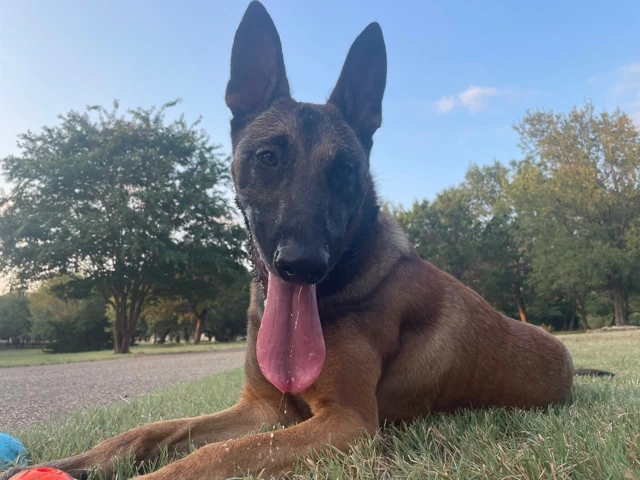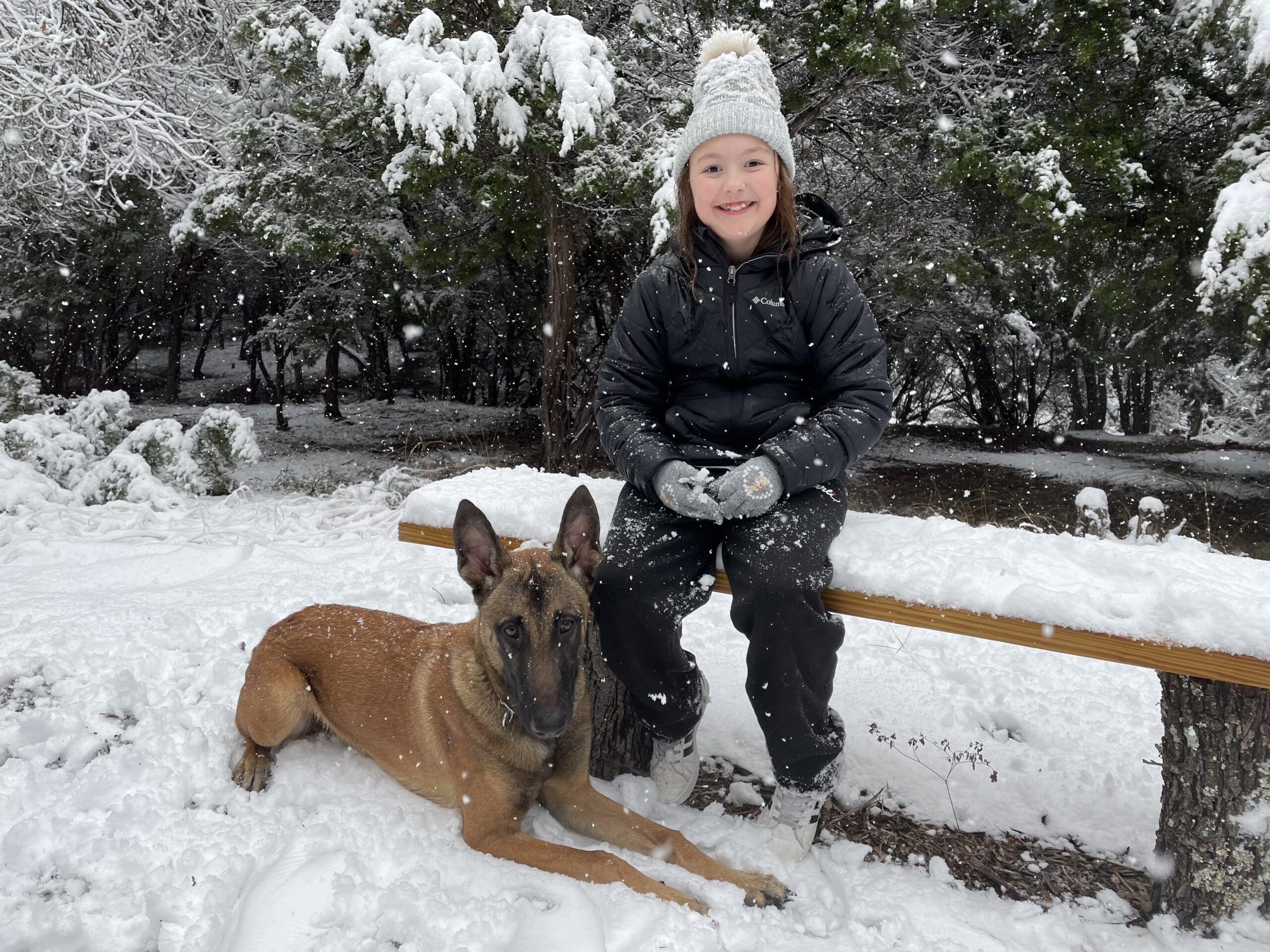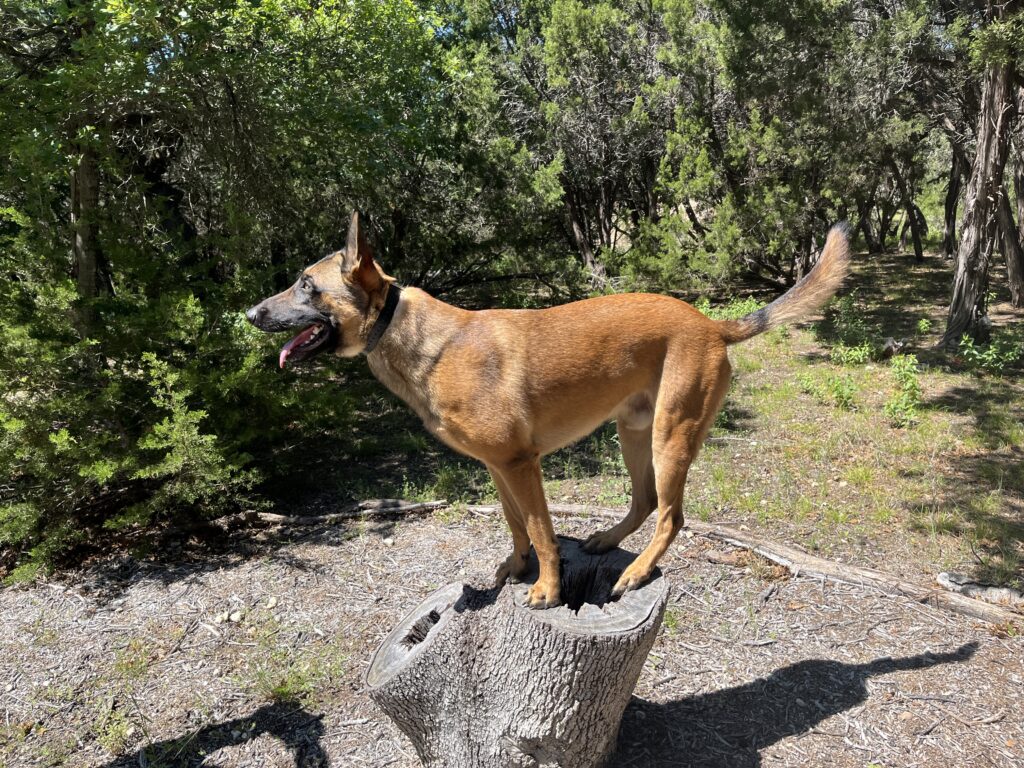How to Train Your Protection Dog
A protection dog is an invaluable asset for any individual or family. By training your protection dog well, you can ensure that they are able to protect you and your family from harm. In this guide, we will outline the basics of protection dog training, so that you can start training your dog today.

Training your protection dog is a process that will require time, patience, and dedication. However, by following these simple steps, you can train your dog to be an effective protector.
The first step in protection dog training is teaching your dog basic obedience commands. This will ensure that your dog listens to you and follows your orders when it matters most. It is important to start with basic commands, such as sit, stay, come, and down, before moving on to more advanced commands.
Once your dog has mastered the basic obedience commands, you can begin working on protection training.
Choosing the Right Dog
When it comes to training a protection dog, choosing the right dog is a crucial first step. Here are some tips to help guide you through this process:
Identifying a Suitable Breed: Not all dog breeds are suited for protection work. Look for breeds that have a natural inclination for guarding and protecting, such as German Shepherds, Rottweilers, and Doberman Pinschers.
Finding a Reputable Breeder: A good breeder will not only provide you with a healthy puppy but also with a dog that has been bred for the specific traits needed for protection work. Look for a breeder who has experience breeding dogs for protection work and who can provide you with references and testimonials from previous customers.
It’s important to note that while genetics play a role in a dog’s suitability for protection work, proper training is also a key factor in producing a reliable protection dog.
Identifying a Suitable Breed
When it comes to training a protection dog, choosing the right breed is crucial. Some of the best breeds for protection dog training include German Shepherds, Rottweilers, Doberman Pinschers, Belgian Malinois, and Giant Schnauzers. These breeds are known for their intelligence, athleticism, and loyal nature, making them ideal for the job.
To ensure that you are selecting the right breed, it is important to research the characteristics and temperament of each breed. For example, German Shepherds are highly intelligent and have a strong work ethic, while Rottweilers are known for their courage and protective instincts. It is also important to consider the breed’s health and potential for genetic disorders.
According to Dog Breeds List, “No protection dog training can make up for an unsuitable breed. Not every dog is suitable for every job. You need a tough dog for the job of protection. It doesn’t have to be huge, but it does have to be tough.”
When selecting a puppy, it is crucial to find a reputable breeder who breeds dogs for specific purposes, such as protection or working. Look for breeders who socialize their puppies and offer health guarantees. By doing your research and selecting the right breed and breeder, you will be providing a solid foundation for your protection dog’s training.
Finding a Reputable Breeder
Finding a reputable breeder is crucial to ensure you have a healthy, well-bred dog that is suitable for protection training. Here are some things to consider when searching for a breeder:
1. Referrals – Ask for referrals from trusted sources such as other protection dog owners, dog trainers, or veterinarians.
2. Research – do your research on the breeder’s reputation, experience, and ethics. Check online reviews and ratings. A reputable breeder will have proper certification and belong to breed clubs or associations.
3. Visit the Breeder – Visit the breeder’s facility to see the breeding environment and health conditions of the puppies and adult dogs. Observe the dogs’ temperaments and behavior.
4. Ask Questions – Ask the breeder questions such as their breeding practices, socialization methods, and the health checks they perform on the puppies. A responsible breeder will be transparent and happy to answer any questions you may have.
5. Contracts – A reputable breeder will provide you with a contract that covers the terms of sale, the puppy’s health guarantee, and support throughout the puppy’s lifetime.
Basic Training
Basic training is an essential step in the process of training your protection dog. It lays the foundation for all advanced training that your dog will undergo in the future.

First, it is important to establish the right environment for your dog. This means creating a safe and secure space for them to train. You should also avoid training your dog in distracting environments, such as busy streets or parks. Next, you can start teaching your dog basic commands such as sit, stay, and come. Using positive reinforcement techniques, reward your dog with treats and praise when they complete a command correctly. Socializing your dog is also crucial during basic training; this involves exposing your dog to various social situations, such as meeting new people and animals, to help build their confidence and make them comfortable in different scenarios.
Establishing the Right Environment
Before beginning any training, it is crucial to create the right environment to ensure the dog’s success. This includes providing a comfortable and safe space for the dog to train in, with room to move freely and access to appropriate equipment for training. It is also important to minimize distractions and eliminate anything that may cause anxiety or stress for the dog during the training process.
To establish the right environment for your protection dog’s training, consider the following tips and recommendations:
1. Choose a quiet and controlled space for training. This can be indoors or outdoors, depending on the type of training and the dog’s preferences.
2. Ensure the space is free from clutter or distractions that may interfere with the dog’s focus and attention during training.
3. Use proper equipment, such as leashes, collars, and muzzles, that are appropriate for your dog’s breed and size.
4. Introduce the dog to the training space gradually, allowing them to become comfortable and familiar with their surroundings before beginning any training exercises.
5. Consider using positive reinforcement techniques, such as treats or toys, to help the dog associate the training environment with positive experiences.
By establishing the right environment for your protection dog’s training, you can help them feel more comfortable, confident, and focused during their training sessions, which ultimately leads to better overall performance and success.
Teaching the Basics
Teaching the basics is an essential part of training your protection dog. It sets a solid foundation for more advanced training later on. One important basic command is “sit.” Start by showing your dog a treat and holding it above its head. As they lift their head to reach for the treat, their hindquarters will lower into a sitting position. Reward them with the treat and praise. Repeat this process until your dog sits on command. Another important basic command is “stay.” Start with having your dog sit and then hold your hand up in front of their face, palm facing them, and say “Stay.” Slowly back away while holding your hand up and then return to your dog and release them with “okay” or “come.” Repeat this process while gradually increasing the distance and duration of the stay. It is important to be consistent in your training and always use the same commands and positive reinforcement.
Additionally, experts recommend breaking up training sessions into short, frequent sessions throughout the day rather than one long session. As Susan Garrett, a well-known dog trainer, states, “Short training sessions are actually more effective than longer ones because dogs can get bored quickly.” This approach will make training more fun and effective for both you and your dog.
It is important to note that different breeds may respond better to certain training methods, so always do research or consult with experts to find the best approach for your dog.
Socializing Your Protection Dog
Socializing a dog is an important component of their protection training. It involves exposing your dog to different places, people, and situations so that they become comfortable and confident in various environments. Here are some tips for socializing your dog:
1. Start Young: Puppies are more adaptable and open to new experiences than older dogs, so it’s best to start socializing them at a young age.
2. Gradual Exposure: Introduce your dog to different environments and situations slowly and gradually. Start with calm and low-stress situations, then gradually increase the level of stimulation.
3. Positive Reinforcement: Use treats and praise to reward your dog for calm and confident behavior during socialization. This will reinforce positive behavior and help your dog feel more comfortable in new situations.
4. Consistency: Continuity is key to socializing your dog. Make sure to expose them to a variety of people, animals, and environments regularly to solidify their learning.
5. Professional Training: Consider enrolling your dog in a professional training program. Professional trainers can provide your dog with the advanced training they need to be an effective protection dog.
Advanced Protection Dog Training
Once your protection dog has mastered the basic commands and has a solid foundation of training, it’s time to move on to more advanced training. This will help your dog become more confident and capable in a variety of challenging situations.

Start by teaching your dog more advanced commands such as “hold” and “release”. These are critical in bite work scenarios and can be taught using a bite sleeve or bite suit with a helper who knows how to handle these training tools. To build confidence, you can expose your dog to more challenging scenarios like loud noises, unfamiliar objects, and extreme weather conditions.
It’s important to practice in real-life scenarios to help your dog understand how to respond in a real-world situation. This can include scenarios such as defending against an intruder, protecting you during a break-in, or responding to an unexpected attack. Continuing to monitor your dog’s behavior and training them regularly will help ensure that they maintain the discipline they need to perform their job correctly.
Teaching Commands
Teaching commands is a fundamental aspect of advanced training for protection dogs. The first step is to start with the basic obedience commands such as “sit”, “stay”, “heel”, and “come”. Once your dog has mastered these commands, you can start incorporating protection-specific commands like “watch”, “alert”, and “attack”. Use consistent verbal cues and hand signals for each command, and pair each command with a specific action to reinforce your dog’s understanding. To improve your dog’s response time, gradually increase the distance and distraction level while practicing commands. Make sure to always reward your dog for a job well done to reinforce positive behavior. Consistent and frequent training sessions are crucial to keep your dog’s skills sharp and build confidence in their abilities. As one trainer recommends, “Repetition is key. The simplest things should be trained, trained again, and then trained some more.” (Carly R. Loyer, Professional Dog Trainer)
Building Confidence
Building confidence in your protection dog is an essential aspect of their training. It’s important to remember that a dog’s natural instinct is to protect their owner and home, but they may lack the confidence to do so in certain situations. Here are some tips to help build your protection dog’s confidence:
– Start with Basic Training: Before advancing to the tougher tasks, ensure that your dog has mastered the basic commands like sit, stay, and come. Once they are confident in following your commands, they will be better prepared for more advanced training.
– Use Positive Reinforcement: Positive reinforcement is a great way to build your dog’s confidence. By rewarding your dog for good behavior, they will be more likely to repeat that behavior in the future. Offering treats or verbal praise is an excellent way to reinforce good behavior.
– Gradually Introduce New Scenarios: Gradually introduce your dog to new environments and stimulate their senses. Dogs rely on their senses of smell, sight, and sound, so it’s important to expose them to different situations. This will help build their confidence in reacting to new scenarios.
– Practice Working as a Team: Practicing different scenarios, such as reacting to a home invasion or an attack, with your dog by your side is an excellent way to build confidence in both the dog and the owner. As your dog becomes more confident, make the scenarios more challenging to ensure they are prepared for any situation.
Key takeaway: Building confidence in your protection dog is crucial to ensure they are fully prepared to protect you and your home. Practicing with gradual exposure to new situations, positive reinforcement, and working as a team are effective ways to build your dog’s confidence.
Practicing in Real-Life Scenarios
Practicing in real-life scenarios is a crucial aspect of advanced training for your protection dog. The goal is to train your dog to respond appropriately in a variety of situations to protect you and your family. One technique is to place your dog in various scenarios that simulate real-life scenarios, such as home intrusions or carjackings. This will help your dog know exactly what to do in these situations. According to canine behavior expert Dr. Ian Dunbar, “a dog trained exclusively indoors won’t be useful when taken outside to the real world.” Therefore, it’s essential to practice in a variety of settings to ensure your dog’s training is comprehensive and effective. It’s also important to note that practicing in real-life scenarios should be done with caution and under the guidance of a professional trainer for safety reasons.
Maintaining Your Dog’s Training
When it comes to training your protection dog, ensuring consistency is key to maintaining their skills and abilities. Here are some essential tips to help you maintain your dog’s training

Socialization is a critical aspect of maintaining a well-trained protection dog. It’s essential to continue exposing your dog to different environments and people. Regular training is another key factor in maintaining your dog’s training. To keep your dog’s skills sharp, incorporate regular training sessions into their routine. Finally, observe your dog’s behavior regularly and be mindful of any potential changes. If you notice any deviations from their usual patterns or behaviors, address them promptly with additional training. This can include correcting any undesired behavior or reinforcing desired behavior.
Continuing to Socialize Your Protection Dog
Socializing your protection dog is an ongoing process that should continue throughout your dog’s life. It’s important to expose them to different environments, people, and animals so they learn how to react appropriately in different situations. Here are some tips for continuing to socialize your dog:
1. Take Your Dog on Regular Outings: Take your dog on regular outings to different places such as parks, beaches, or crowded streets. This will help your dog get used to a variety of people and situations.
2. Introduce Your Dog to New People: Introduce your dog to new people gradually, starting with calm and familiar people before gradually exposing them to strangers. Make sure your dog is comfortable and relaxed before introducing them to new people.
3. Encourage Positive Interactions: Encourage positive interactions with people and other dogs during socialization. Reward your dog for good behavior and make sure they have positive experiences.
4. Continue Training: Socialization and training go hand in hand. Keep up with training sessions and reward your dog for good behavior. This will help your dog remain calm and obedient in different situations.
Regular Training Sessions
Regular training sessions are crucial for maintaining your dog’s protection training. As a protector, your dog needs to be in top physical and mental condition. Regular exercise and training enhance the bond between your dog and you, as well as boost their confidence. It’s essential to maintain the consistency in training and stick to the routine established earlier. Make sure your dog is comfortable and ready to start the session before beginning the training.
Enforcing commands in different environments, increasing the level of difficulty in training, and practicing real-life scenarios continue to boost your dog’s confidence. It’s important to note that the level of difficulty in training sessions should be gradual. Your dog should be ready to move to the next level before you start the tougher training sessions. Regular reinforcement of basic commands, such as sit, stay, and come, and a steady increase in difficulty levels make your dog’s training much more effective.
Training sessions shouldn’t be too long, as this can negatively affect your dog’s attention span and focus. Shorter sessions more frequently are much more effective. Keeping it fun and enjoyable for your dog makes them look forward to the sessions. It’s essential to keep track of your dog’s progress and adjust the training plan accordingly.
Monitoring Your Dog’s Behavior
Once your protection dog has been trained, it’s essential to continue monitoring their behavior to ensure they are performing their job well. Regular check-ins with your dog can help you catch any behavior issues early and keep their training on track.
Here are some tips for effectively monitoring your protection dog’s behavior:
1. Conduct regular training sessions – Continued training is vital to maintain your dog’s skills and reinforce their good behavior. Schedule regular training sessions to keep your dog sharp.
2. Provide plenty of mental and physical stimulation – Dogs, including protection dogs, need physical and mental stimulation to stay healthy and engaged. Make sure your dog gets plenty of exercise and opportunities to play, explore, and learn new skills.
3. Keep an eye on your dog’s body language – Dogs communicate a lot through body language, and it’s essential to be aware of what your dog is telling you. Watch for signs of stress, discomfort, or other issues, and address them promptly.
4. Establish boundaries and rules – Clear rules and boundaries can help your protection dogs understand what is expected of them. Be consistent with your expectations and reward good behavior to reinforce these boundaries.
By monitoring your dog’s behavior regularly and implementing these tips, you can ensure they are performing their job well and remain well-trained and in top condition.

